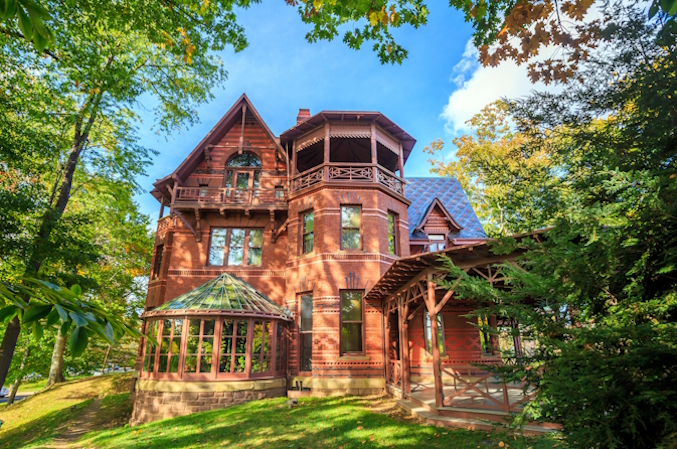Owners of Nationally Recognized Properties Can Draw on Incentives to Help Fund Their Historic Home Remodels
Every old home has a story and is filled with unique characteristics that make it truly one-of-a-kind. Whether Tudor, Victorian, Craftsman, or another classic architectural style, it only takes one look to understand why so many people have a soft spot for these charming beauties.
But just because a home is old doesn’t mean it’s historic. A historic home is in a classification of its own, marked with a national designation that celebrates its unparalleled design, artistry, and historical importance.
Kansas City’s rich history makes it a goldmine for qualifying homes. Keep reading to learn more about how properties are evaluated – and the ways in which it can benefit your future historic home remodel plans.
What Historic Home Remodeling Experts Recommend to Figure Out if Your Home is Historic
The National Register of Historic Places is the official list that recognizes properties worthy of preservation. The program, authorized by the National Historic Preservation Act of 1966 and overseen by the National Park Service, is an integral part of a nationwide initiative “to coordinate and support public and private efforts to identify, evaluate, and protect America’s historic and archeological resources.”
A structure that makes the list must be significant to “American history, architecture, archeology, engineering, or culture and possess integrity of location, design, setting, materials, workmanship, feeling, and association.” It also needs to meet at least one of four additional criteria. Professionals who specialize in remodeling historic homes suggest phrasing the National Register’s criteria as questions to determine if your home is eligible:
- Is my home associated with events that have made significant contributions to the broad patterns of American history?
- Is my home associated with the lives of significant people or historical figures?
- Does my home embody distinctive characteristics of a type, period, or method of construction? Does it represent the work of a master, or possess high artistic values, or represent a significant and distinguishable entity whose components may lack individual distinction?
- Does my home yield, or is it likely to yield, important information about history or prehistory?
If you answer yes to any of these, it’s possible your home meets the necessary qualifications to be listed on the National Register of Historic Places. Submitting a nomination is a time-intensive process, though, so it’s best to do some research of your own beforehand. Your local historical society is a great place to start to learn more about your home and any notable individuals who lived there.
Keep in mind that most properties on the National Register of Historic Places are generally at least 50 years old and retain most or all of their historic physical characteristics. Because of this, a qualified remodeler is essential if you’re considering remodeling your historic home.
The Benefits of Owning a Historic Home, Including the Opportunity for a Historic Home Remodel
The benefits of owning a home classified as historic go beyond formal recognition. Having your home listed on the National Register of Historic Places automatically makes your property a part of the National Register Archives, which provides researchers with a comprehensive database of valuable historical information.
It also encourages preservation of historic resources, opens up several networking opportunities, and boosts the perceived value of your home with the addition of a bronze plaque.
A spot on the National Register of Historic Places gives property owners access to a number of incentives as well, like federal grants, federal investment tax credits, and possible state tax benefits and grants. This ultimately helps homeowners offset the costs of historic home remodeling and maintenance, making it easier to finance projects that preserve their properties’ unique character.
Before starting a historic home remodel, a qualified remodeling company will get to know your property, document its current state, and design a plan that fits your needs while staying true to your home’s architectural style. With the right team on the job, a historic home remodel can both enhance the functionality of your space and protect its distinguishing features for future generations to enjoy.
How to Find the Right Team for a Historic Home Remodel
Although the National Register of Historic Places doesn’t restrict what a non-federal owner can do with a property, your city’s zoning bylaws and other ordinances have specific restrictions if your home is located within a historic district. Additionally, if you take advantage of grants and tax incentives, you’re committing to maintaining a historically accurate design.
In either case, you should partner with a specialized business that has years of experience with classic architecture and understands the significance of every element inside and outside your home. A general contractor won’t have the knowledge or craftsmanship it takes to handle your historic home remodel with care.
Whether a historic home kitchen remodel, historic home bathroom remodel, or whole-home overhaul, you need a highly specialized team on your side. Contact a historic home remodeling expert near you for more information.


